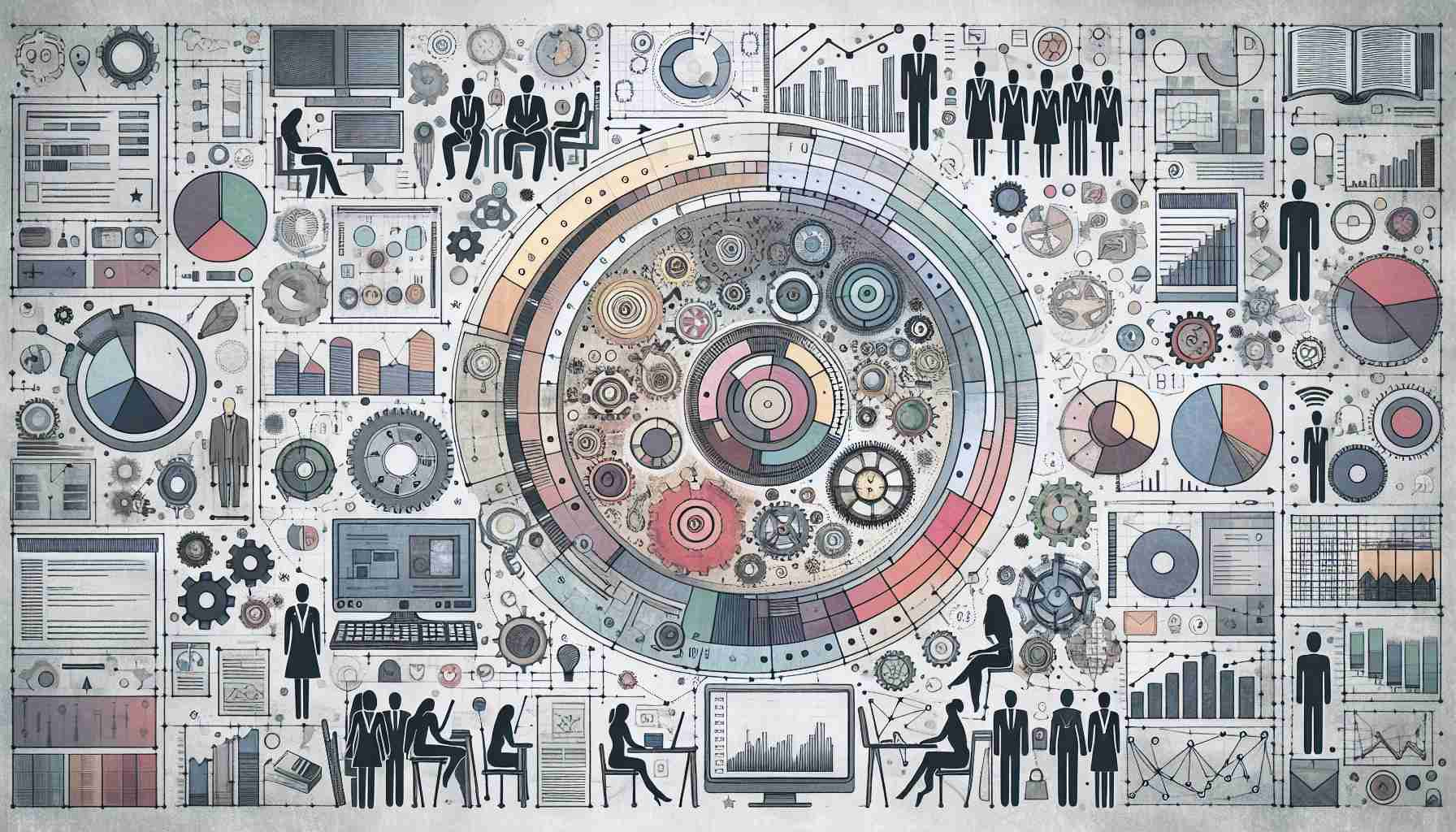People Analytics A Comprehensive Guide

People Analytics Briefly Summarized
- People Analytics is a data-driven approach to understanding and optimizing the workforce and its impact on organizational performance.
- It involves the collection, analysis, and application of employee data to improve business outcomes and employee experiences.
- This field intersects with HR, IT, and business strategy, leveraging statistical tools and methodologies to inform decision-making.
- Key applications include talent acquisition, performance management, employee retention, and workforce planning.
- As technology advances, People Analytics is becoming increasingly sophisticated, incorporating AI and machine learning to provide deeper insights.
People Analytics represents a transformative approach to managing human capital within organizations. By leveraging data, statistical analysis, and predictive modeling, People Analytics provides a fact-based foundation for making informed decisions about the workforce. This discipline has emerged as a critical tool for HR professionals and business leaders alike, offering insights that drive strategic initiatives and operational improvements.
Introduction to People Analytics
The concept of analysis, as described by Wikipedia, involves breaking down a complex topic into smaller parts to gain a better understanding. In the context of People Analytics, this means dissecting the myriad elements that constitute the workforce and how it operates within an organization. The ultimate goal is to synthesize this information into actionable strategies that enhance both individual and organizational performance.
People Analytics is not just about collecting data; it's about transforming that data into actionable insights that can profoundly impact business outcomes.The Evolution of People Analytics
Historically, HR decisions were often based on intuition and experience rather than empirical evidence. However, with the advent of advanced data collection and analysis tools, the field of People Analytics has gained significant traction. It has evolved from simple headcount reports and employee satisfaction surveys to sophisticated predictive models that can forecast turnover, identify high-potential employees, and optimize talent acquisition strategies.
The Process of People Analytics
The People Analytics process typically involves several key steps:
- Data Collection: Gathering data from various sources, including HR systems, performance metrics, employee surveys, and external benchmarks.
- Data Cleaning and Integration: Ensuring data quality and consistency, and integrating disparate data sources into a unified dataset.
- Analysis: Applying statistical methods and models to uncover patterns, correlations, and insights within the data.
- Insight Generation: Translating analytical findings into understandable and actionable insights for business leaders and HR professionals.
- Action and Monitoring: Implementing strategies based on insights and continuously monitoring their impact to refine and adjust as necessary.
Applications of People Analytics
People Analytics can be applied across a wide range of HR functions and business challenges, including:
- Talent Acquisition: Identifying characteristics of successful hires and streamlining recruitment processes.
- Performance Management: Understanding drivers of employee performance and developing targeted improvement programs.
- Employee Retention: Predicting turnover risks and designing interventions to retain top talent.
- Workforce Planning: Forecasting future talent needs and developing strategies to meet those demands.
- Diversity and Inclusion: Analyzing workforce demographics and implementing policies to promote a diverse and inclusive environment.
Trends in People Analytics
As we move into 2024 and beyond, several trends are shaping the People Analytics landscape:
- Integration of AI and Machine Learning: These technologies are enabling more sophisticated analyses, such as natural language processing for sentiment analysis and deep learning for predictive modeling.
- Focus on Employee Experience: Organizations are increasingly using People Analytics to understand and improve the employee journey, from onboarding to exit.
- Ethical Considerations and Privacy: With the rise of data-driven HR practices, concerns about data privacy and ethical use of employee information are becoming more prominent.
Tools for People Analytics
A variety of tools and platforms are available to support People Analytics initiatives, ranging from specialized HR analytics software to broader business intelligence platforms. These tools help organizations collect, analyze, and visualize data, often incorporating advanced features like predictive analytics and scenario planning.
Conclusion

People Analytics has become an indispensable part of modern HR and business strategy. By harnessing the power of data, organizations can make more informed decisions that not only drive business success but also enhance the well-being and productivity of their workforce.
The future of People Analytics is bright, with ongoing advancements in technology and methodology promising even deeper insights and more impactful applications.FAQs on People Analytics
What is People Analytics? People Analytics is the practice of collecting, analyzing, and applying data related to employees and workplace dynamics to improve business outcomes and employee experiences.
Why is People Analytics important? It provides evidence-based insights that can lead to better decision-making in areas such as talent management, performance evaluation, and organizational development.
What kind of data is used in People Analytics? Data can include employee demographics, performance metrics, engagement scores, turnover rates, and much more, often sourced from HR systems and employee surveys.
How does People Analytics improve business outcomes? By identifying trends and patterns in workforce data, organizations can make strategic decisions that enhance productivity, efficiency, and employee satisfaction, ultimately impacting the bottom line.
What are the ethical considerations in People Analytics? Organizations must navigate issues of data privacy, consent, and the responsible use of employee information, ensuring that People Analytics practices are transparent and comply with relevant laws and regulations.
Sources
- Analytics
- What Is People Analytics? Definition, Process, Trends, and Tools
- People Analytics: An Essential Guide for 2024 - AIHR
- What Is People Analytics and How Do I Get Started? - Visier
- People Analytics | McKinsey & Company
- What is People Analytics? | Definition from TechTarget
- People Analytics | Factsheets - CIPD
- Wharton People Analytics
- People Analytics Course (UPenn) - Coursera
- Better People Analytics - Harvard Business Review
- How to be great at people analytics - McKinsey